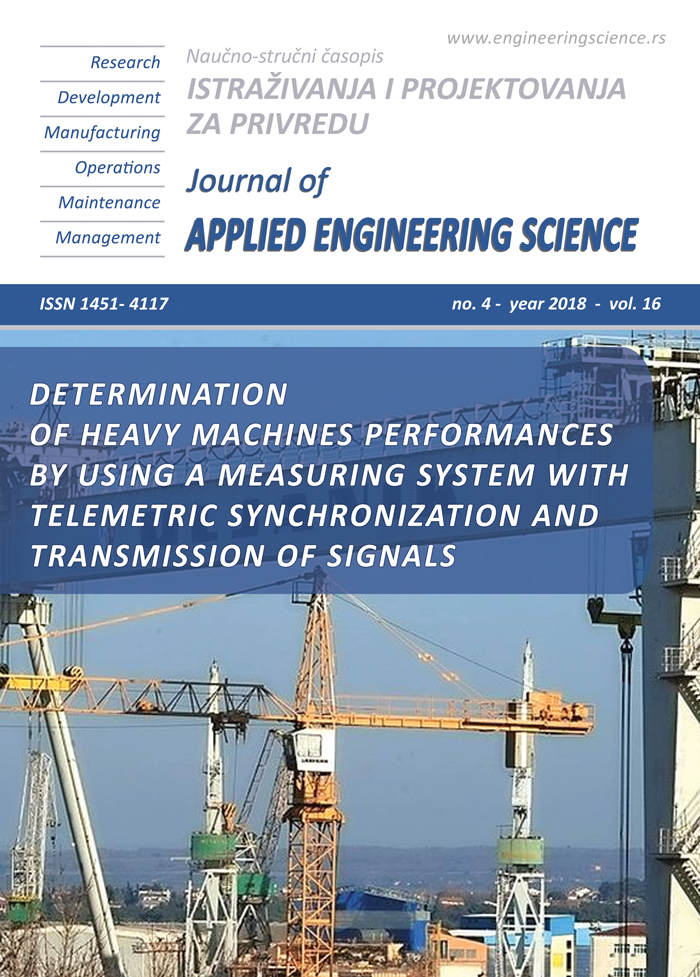CHARACTERISTIC STRUCTUR MICRO HOT ROLLED PLATE STEEL VARIANS RADIUS BENDING WITH HEAT TREATMENT QUENCH-TEMPER
Abstract
Abstract : Hot Roll Plate Steel (HRPS) is a heat treatable steel made by PT Krakatau Steel Indonesia, HRP Steel specifications classified as steel armor. To get high hardness and strength, HRP Steel is heated by method quenching and temperature austenite is held for a while, then cooled with water media. Furthermore HRP Steel was reheated by tempering to temperature below the line eutectoid and held for a while and then cooled with atmospheric air to increase its plasticity (ductility). The purpose of obtaining heat treatment is to improve microstructure that can affect the value of violence. The method used in this study is divided into 2 treatments, namely bending treatment with a radius of 55mm and 60mm and treatment for heat treatment with quenching temperature of 800 ˚C holding 15 minutes and quenching tempering temperature of 150 ˚C holding 45 minutes. The results of the analysis showed that the bending treatment and heat treatment of the morphology of the microstructure changed. In the bending treatment radius of 55mm and quenching-tempering treatment has a higher percentage of martensitic microstructure and a smooth martensitic structure so that the vickers hardness value is higher than the 453 VHN treatment.
Keywords : Bending, Heat Treatment, Struktur Mikro
References
Cimpoeru, S. J. 2016. The Mechanical Metallurgy of Armours Steel. Defence Sains and Technology Group – Land Division. Australia.
G. Madhusudhan Reddy, T. Lee, G.R.N. Tagore, 1995, Weldability studies of high-strength low-alloy steel using austenitic fillers, Journal of Materials Processing Technology 49, 213 – 228
Su J. Et al, 2013, Simulation Analysis of Minimum Bending Radius for Lead Frame Copper Alloys, Journal of Material Science and Engineering 101-106, China
Krauss, R.M., & Hadar, U. (1999). The role of speech-related arm/hand gestures in word retrieval. In, R. Campbell & L. Messing (Eds.), Gesture, speech, and sign (93 – 116). Oxford: Oxford University Press.
Zuo X, Zhou Z. Study of Pipeline Steels with Acicular Ferrite Microstructure and Ferrite-bainite Dual-phase Microstructure. Materials Research. 2015;18(1):36-41.
Pereloma EV, Kostryzhev AG, AlShahrani A, Zhu C, Cairney JM, Killmore CR, et al. Effect of austenite deformation temperature on Nb clustering and precipitation in microalloyed steel. Scripta Materialia. 2014;75:74-77.
Tian Y, Tang S, Wang BX, Wang ZD, Wang GD. Development and industrial application of ultra-fast cooling technology. Science China Technological Sciences. 2012;55(6):1566-1571
Ravikumar SV, Jha JM, Mohapatra SS, Pal SK, Chakraborty S. Influence of Ultrafast Cooling on Microstructure and Mechanical Properties of Steel. Steel Research International. 2013;84(11):1157-1170.
Wang G, Yan Y, Li J, Qiao L, Volinsky AA. Microstructure effect on hydrogen-induced cracking in TM210 maraging steel. Materials Science and Engineering: A. 2013;586:142-148.
Briant, C.L.; Banerji, S.K. Tempered martensite embrittlement in phosphorus doped steels. Metall. Trans. A 1979, (10), 1729–1737
Fang X, Fan Z, Ralph B, Evans P, Underhill R. Effects of tempering temperature on tensile and hole expansion properties of a C–Mn steel.Material Processing Tecnology : 2003 (132) ;215–218
Sharifi H, I Kheirollahi-Hosseinabadi, Ghasemi R. The Effect of Tempering Treatment on the Microstructure and Mechanical Properties of DIN 1.4021 Martensitic Stainless Steel. International Journal of ISSI : 2015; (12) 1; 9-15
Adamczyk J, Grajcar A. Heat treatment and mechanical properties of low-carbon steel with dual-phase microstructure. Journal of Achievements in Materials and Manufacturing Engineering : 2007 (22) 1; 13-20
Daramola O. Oluyemi, Oladele Isiaka Oluwole, Adewuyi B. O.Studies of the Properties of Heat Treated Rolled Medium Carbon Stee. Materials Research. 2011; 14(2): 135-141
Handoyo, Yopi. 2015. Pengaruh Quenching dan Tempering Pada Baja JIS Grade 245C Terhadap Sifat Mekanis. Jurnal Ilmiah Teknik Mesin Universitas Islam Bekasi. Vol. 3, No. 2, Hal 102-115.

